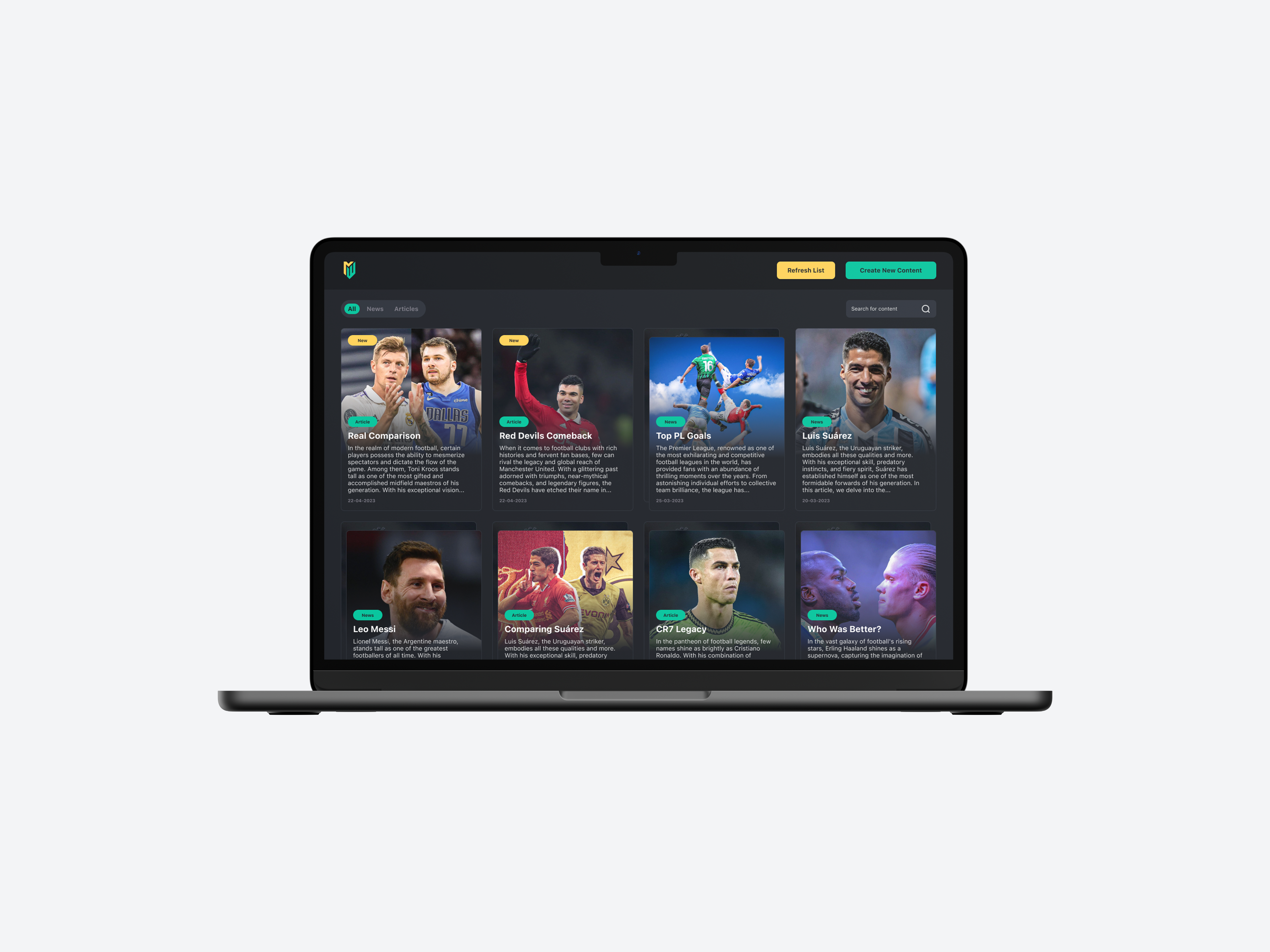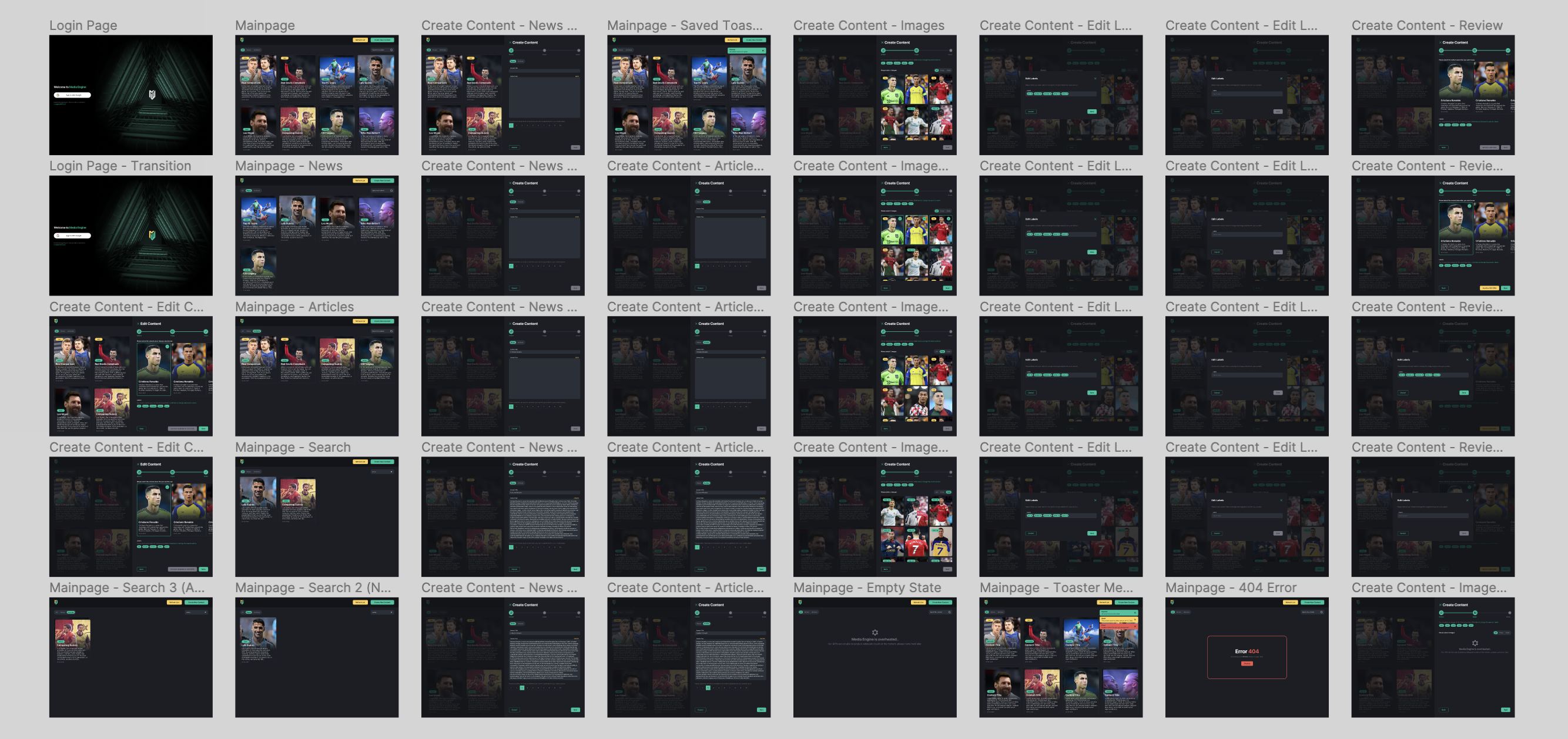Media Engine
This project focuses on creating an innovative solution to support 433's content team in producing content using Artificial Intelligence (AI). As part of a constant pursuit of innovation and experimentation within its social sports communities, 433 is highly committed to developing AI-enabled products for internal use.
The idea behind the Media Engine arose from the need to make the content team more efficient and productive. This has the expectation of saving a lot of time, while maintaining the quality and diversity of the content. To this end, I worked intensively with various stakeholders, including developers and content creators, to ensure that the Media Engine's interface is intuitive, user-friendly and fully tailored to the specific tasks and requirements of the 433 content team. Click on the prototype button below to view the full project or read on to get an insight into the creation process.
Prototype
The creation process of the Media Engine for 433 involved iterative steps driven by groundbreaking UX research methods, such as interviews, observations, and co-creations, to achieve an optimized user experience. By applying these methods, the team was able to gather in-depth insights into the needs, challenges, and preferences of the content creators at 433.
The process began with interviews to gain a deep understanding of the existing content creation process using the 433 CMS. This provided valuable insights into pain points and inefficiencies that needed to be addressed. Observations were then conducted to map out the daily tasks and interactions of the content creators, providing a holistic view of the workflows and highlighting specific areas for improvement.
Co-creation sessions were organized with the content creators, actively involving them in the design process of the Media Engine. Through collaboration and idea exchange, the needs and preferences of the content creators were integrated into the interface design and functionalities of the Media Engine. This iterative process ensured that the solution closely aligned with the specific requirements and workflows of the users.

A significant part of the creation process involved analyzing the flowchart of the current system, the 433 CMS, and designing a new flowchart for the Media Engine. The flowchart of the current system was mapped out in detail, including the roles and steps involved. Subsequently, an optimized flowchart for the Media Engine was developed, eliminating unnecessary steps and streamlining the process. This flowchart served as a visual guide for the design of the Media Engine, ensuring a more efficient and intuitive user experience.
The implementation of the Media Engine resulted in significant improvements in the content creation process. With the automated functionalities of the Media Engine and workflow optimizations, the time required to create a specific content piece was drastically reduced. The number of team members involved was minimized, and with AI automation applied to labels and images, substantial gains were achieved. The structural advancements made with the Media Engine had a direct impact on achieving efficiency.

The analysis concluded that the content creation process with the Media Engine would now take approximately 57 minutes. In summary, the implementation of the Media Engine led to a significant time savings of 45 minutes in the content creation process. This resulted in a more efficient workflow, where humans remain in control while benefiting from AI support. Click on the prototype button below to view the full project!
Prototype